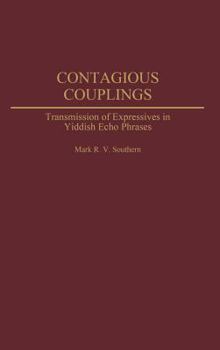Contagious Couplings: Transmission of Expressives in Yiddish Echo Phrases
This volume examines relationships between native languages and Yiddish. It highlights the historical and sociolinguistic development of Turkic, Iranian, South Asian, Slavic, Greek, Balkan, Judezmo, Armenian, Georgian, and Basque languages. One of the main focuses is on the adopted post-medieval and pre-modern Yiddish-speaking Ashkenazi homelands of Eastern Europe.
The book emphasizes the role of ludic or playful modifications of a language's structures at the colloquial level as sources of linguistic change. And, it goes further to say that expressive language, linguistic iconicity, and etymological analysis can all complement and enrich each other.Format:Hardcover
Language:English
ISBN:0275980871
ISBN13:9780275980870
Release Date:July 2005
Publisher:Praeger
Length:374 Pages
Weight:1.47 lbs.
Dimensions:0.9" x 6.0" x 9.0"
Related Subjects
Arts, Music & Photography Dictionaries & Thesauruses Education Education & Reference Ethnic Studies Foreign Language Foreign Language Dictionaries & Thesauruses Foreign Language Fiction Foreign Language Learning Foreign Language Study Foreign Language Study & Reference Foreign Languages Geography History & Criticism Human Geography Humanities Language Arts Linguistics Phrasebooks Politics & Social Sciences Reference Social Sciences Specific Demographics Textbooks Words, Language & GrammarCustomer Reviews
0 rating





